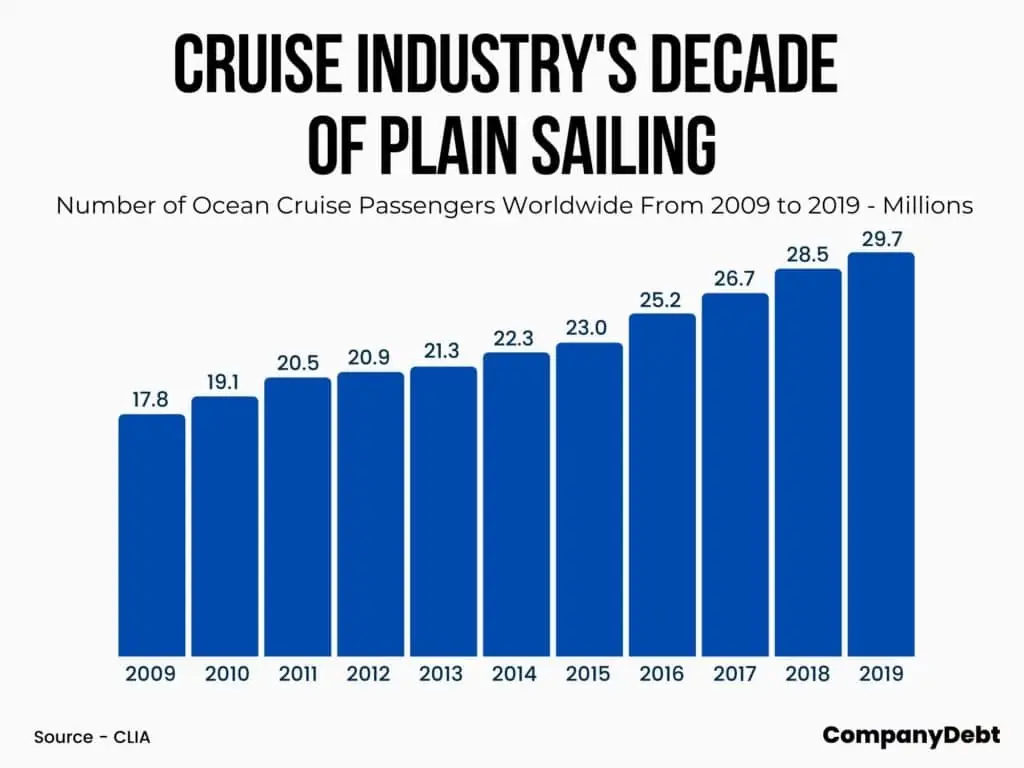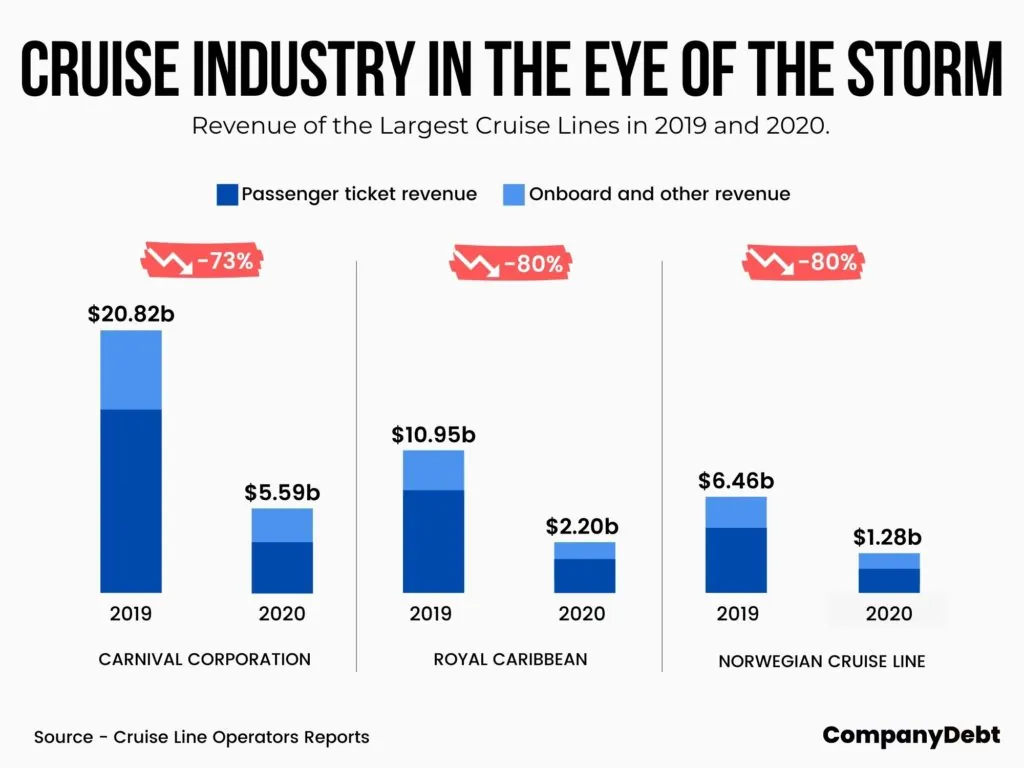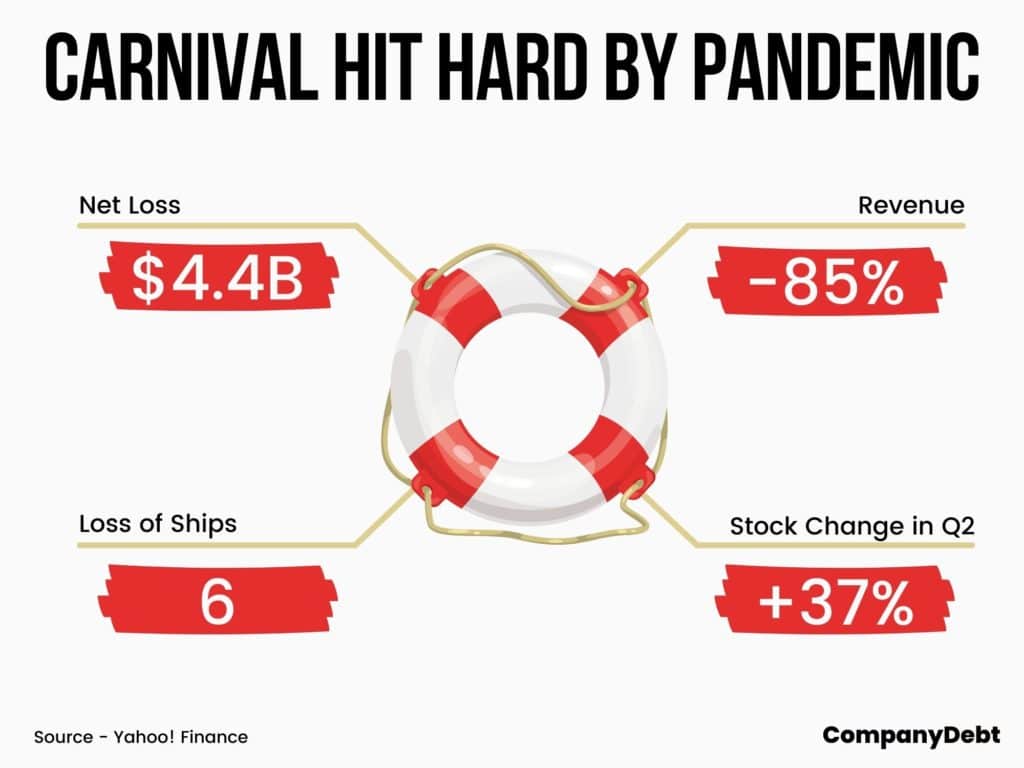
Has the Cruise Industry Been Hit by the Perfect Storm?
For many years, the cruise industry was booming, riding the crest of a wave that culminated in more than 29.7 million passengers in 2019. In 2020, it was forecast that more than 32 million passengers would go cruising, but then along came COVID-19 to take the wind from the industry’s sails.
From being the single fastest growth area of the entire tourism industry, COVID-19 has been among the hardest hit by the pandemic.
How did COVID-19 Impact the Cruise Industry?
The COVID-19 pandemic has completely devastated the cruise industry. At the beginning of the outbreak, cruise ships were prevented from docking in many ports, creating contagion hotspots that the press dubbed ‘floating petri dishes’ and leaving tens of thousands of passengers and staff stranded. Since then, border closures, social distancing and a lack of foreign travel have compounded the misery of this $150 billion industry.
We look at the impact of the perfect storm that has hit the cruise industry and discuss whether it can ever recover from this terrible year.

Over the last decade, there has been a huge increase in the number of passengers booking a cruise. In 2009, there were 17.8 million ocean cruise passengers. That number rose year-on-year, reaching 19.1 million in 2010, 20.5 million in 2011 and 20.9 million in 2012. By 2019, passenger numbers rose to nearly 30 million.
The result of this surging demand is an industry with more than 50 cruise lines and 270 ships. The three biggest cruise lines, Carnival Corporation & PLC, Royal Caribbean Group, and Norwegian Cruise Line, generated combined revenues of $34.2 billion in 2018. However, perhaps even more indicative of the health of the industry was their share price, which at the beginning of 2020 was $134.55, $58.79 and $51.35, respectively.
How has COVID Affected the Cruise Industry?
Up until very recently, cruises were the fastest-growing sector of the travel industry, with demand rising by 20.5% over the last five years alone. However, in early 2020, that all began to unravel. On 3 February, long before the first UK lockdown, an outbreak of COVID-19 was reported on a British-registered cruise ship called the Diamond Princess.
Over the next month, 700 people onboard the cruise ship tested positive for the coronavirus, and nine died. That massive outbreak, along with numerous vessels reporting large numbers of positive cases, caused huge reputational damage, and the industry has been negatively associated with the pandemic ever since.
Since the first UK-wide lockdown in March, cruise line revenues have fallen dramatically. As the chart below shows, the three largest operators have all experienced a more than 70% year-on-year revenue fall.

Carnival Cruises earnings report for Q2 2020 shows just how hard the largest operator in the cruise line industry has been hit. It reported a net loss of $4 billion for the period and an 85% decline in revenues when compared with Q2 2019. Reports also show that the company is burning through $650 million every month that its ships are docked, prompting it to sell off or scrap six ships from its fleet as a cost cutting measure.

The rapidly changing fortunes of the cruise line industry was also reflected in the share price of the three largest cruise organisations, which had fallen to $30.30, $10.50 and $12.60 respectively by 1 April 2020. Cruise lines have also had to pay out huge amounts in cancellations and meet the costs associated with maintaining their immense ships when they’re not sailing.
The impact of the floundering cruise line industry has also been felt more widely. In Europe alone, it’s estimated that more than 200,000 jobs that depend directly or indirectly on the industry have been lost. There has also been a knock-on effect on many of the countries and island nations that rely heavily on the tourists that the cruise lines bring to their shores. For example, cruise line customers contribute more than $2 billion to the economies of the Caribbean Islands.
Staying Afloat
To keep their businesses afloat in the early days, many cruise lines decided to offer bonus credits (up to 125% of the booking amount) rather than cash refunds for customers whose trips were cancelled due to the pandemic. That helped to keep cash in the company coffers, with an estimated 76% of passengers choosing to take credit for future trips rather than receiving a cash refund.
Despite the uncertainty about when cruise ships will be able to lift their anchors once again, there still seems to be an appetite for cruising among previous passengers. A survey by the Cruise Lines International Association found that 82% of previous customers were likely to book a cruise for their next holiday, although it may be more difficult to convince first-time cruisers.
In an attempt to re-establish the trust of holidaymakers and show that cruises are viable during a pandemic, some operators have run so-called ‘cruises to nowhere’. In the first of these cruises, passengers were not allowed to disembark and were subject to strict measures. In areas where local authorities allow it, passengers can disembark but must remain together as a group.
Although the cruise lines are convinced that the concept works, the truth is that these voyages took place with just 60% of the pre-pandemic passenger numbers, and those low passenger numbers would lead to losses over the longer term. One of the key attractions of a cruise for many passengers is being able to disembark and experience foreign destinations. The limit on these personal freedoms will undoubtedly damage many people’s appetite for cruising.
What’s the Cruise Industry Outlook in 2021?
The truth is that the recovery of the cruise industry is tied to the global success of the vaccination rollout. As is the case with so many tourism and hospitality businesses, there is no realistic prospect of a sustainable recovery until the pandemic has been brought under control. Although the vaccine programme is progressing at a pace in certain countries, such as the UK, the US and Israel, the stuttering rollout in the EU and many other countries around the world is threatening to delay the return of the cruise ships.
At the time of writing, much of mainland Europe is preparing to lockdown for the third time, and while these restrictions remain in place and restaurants and pubs remain closed, it’s unthinkable that passengers will be welcomed onto cruise ships any time soon.
As well as the ongoing pandemic, the industry also has to battle to restore its reputation, which has been damaged over the last few years. Cruise operators have been blamed for encouraging harmful overtourism in hotspots such as Venice, Barcelona and Dubrovnik. During the pandemic, some of those destinations are rethinking their reliance on cruise ships and are working to make themselves independent of an industry that is unloved by some portions of the local population.
Previously, cruise operators have also failed to take the subject of environmental sustainability seriously. Albeit reluctantly, over the last few years, cruise operators have invested billions to create cleaner, more efficient vessels, and that’s something that the cruise operators say will continue despite the enormous losses they have made due to the pandemic.
Although the cruise industry has been hit by the perfect storm of an unprecedented global pandemic and reputational damage due to environmental concerns and overtourism, crucially, demand from passengers remains strong. Financial backers are also still on board, as they know just how profitable the industry is when it can sail on calmer seas. That combination of profitability and strong demand should safeguard the future of the industry once the current storm subsides.
Sources








